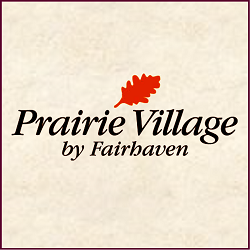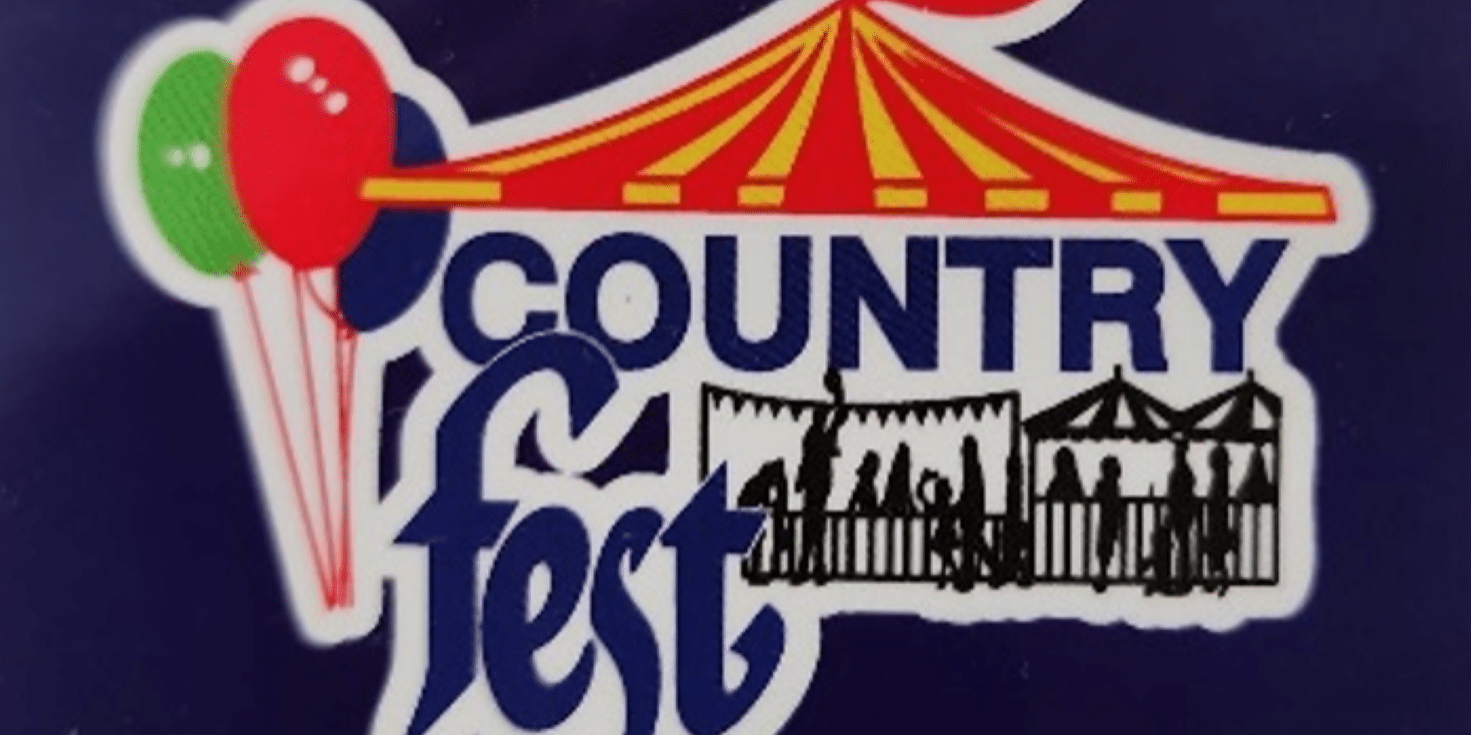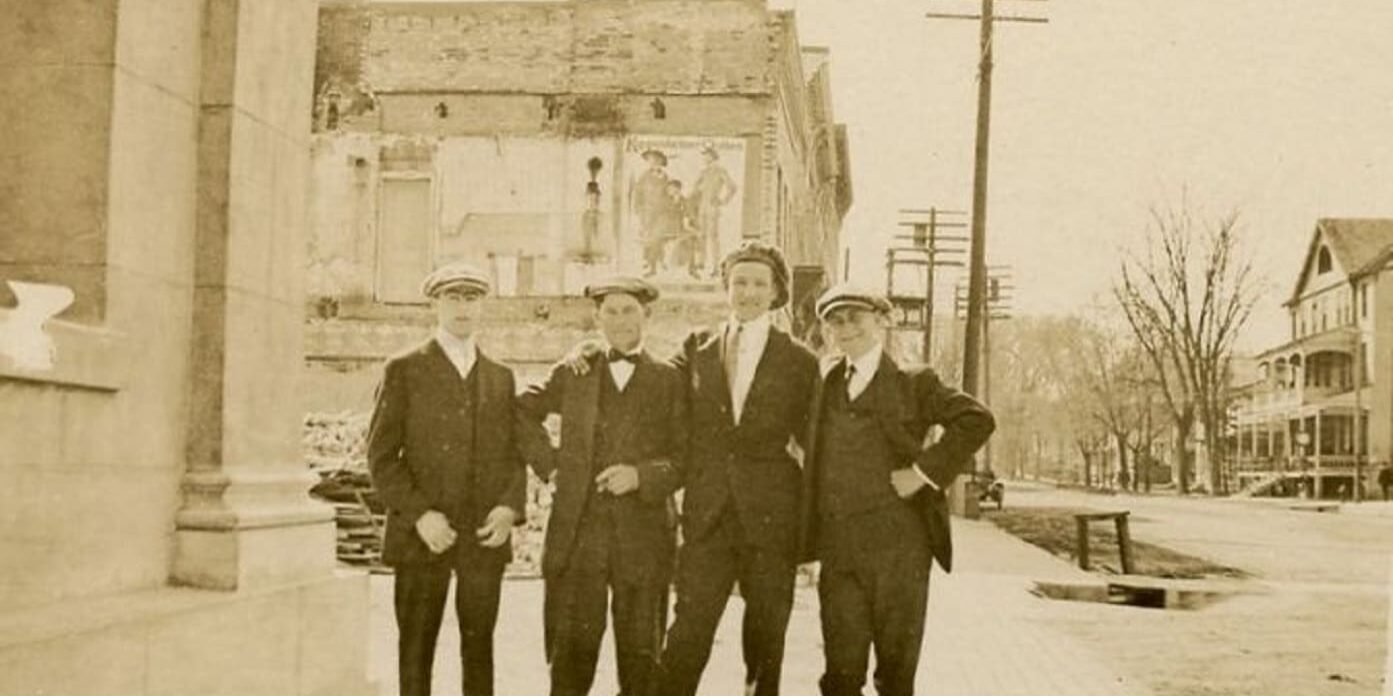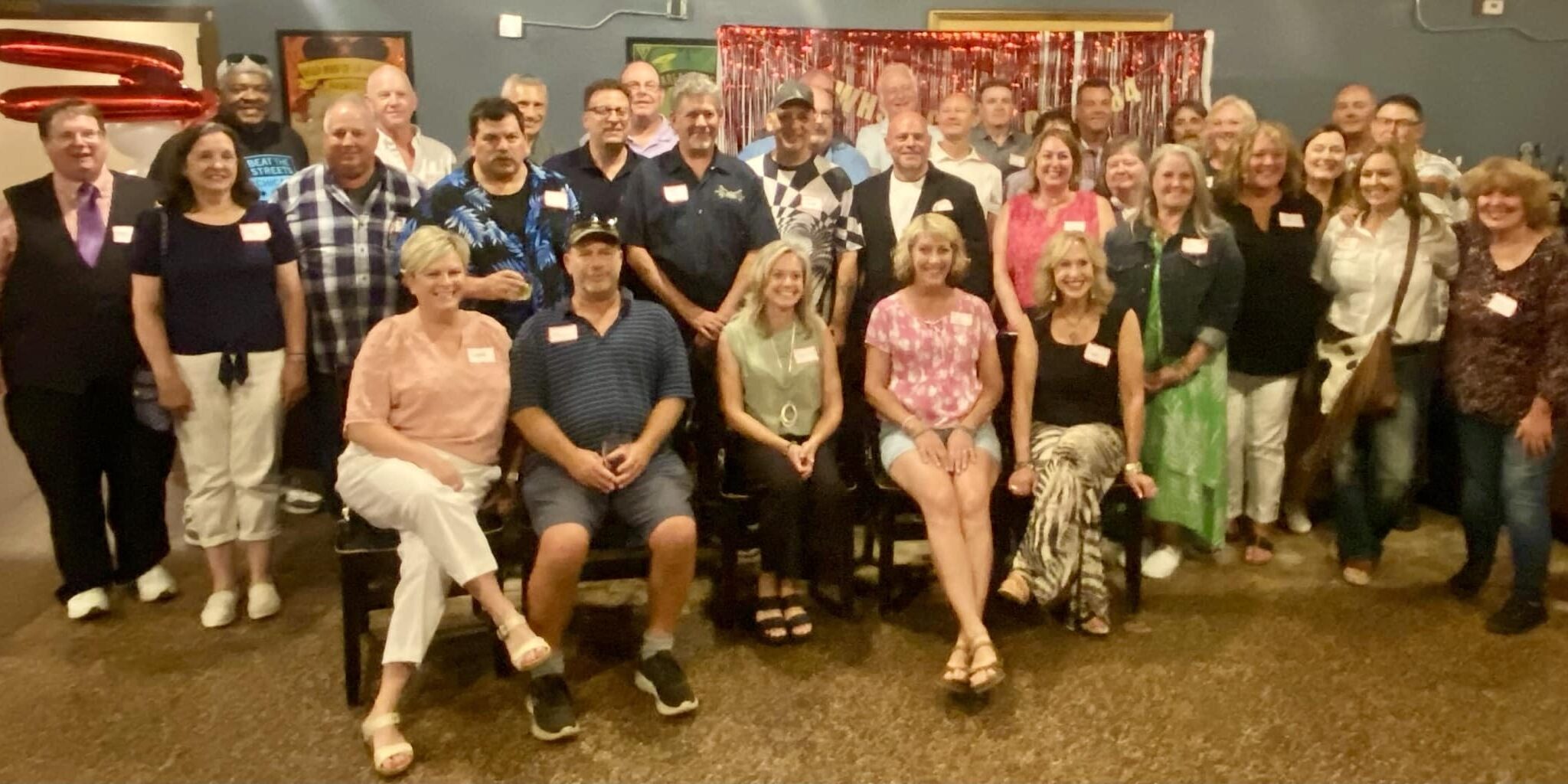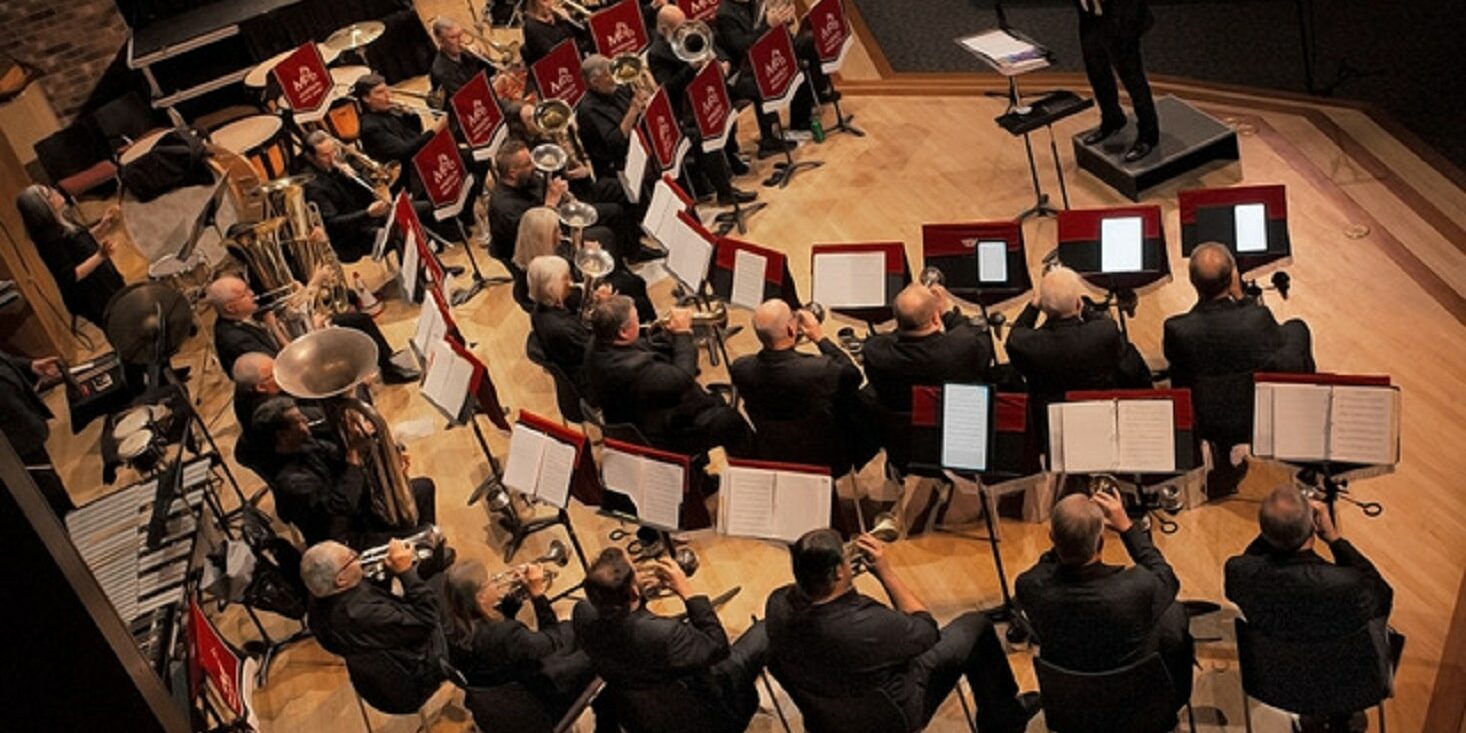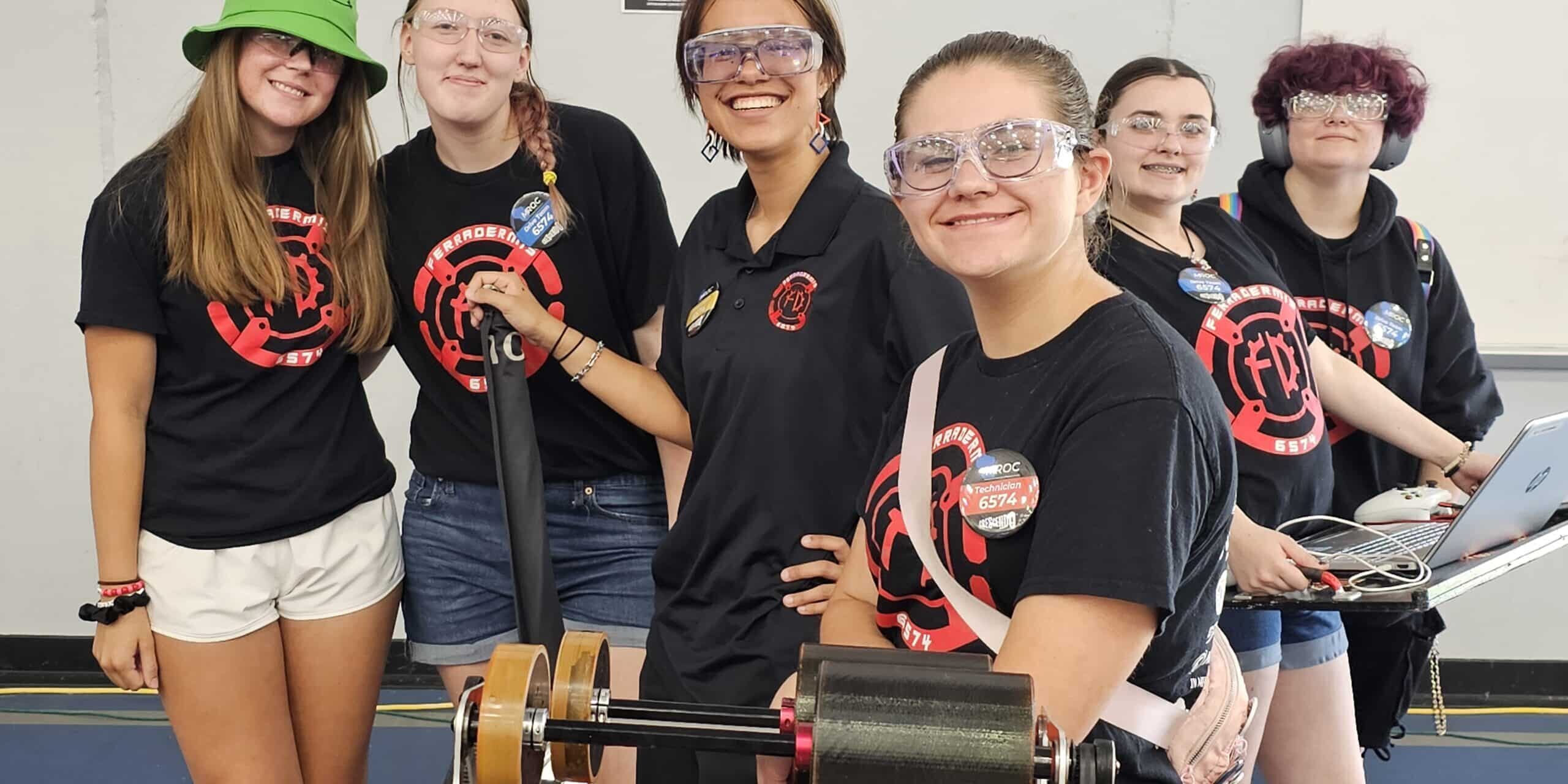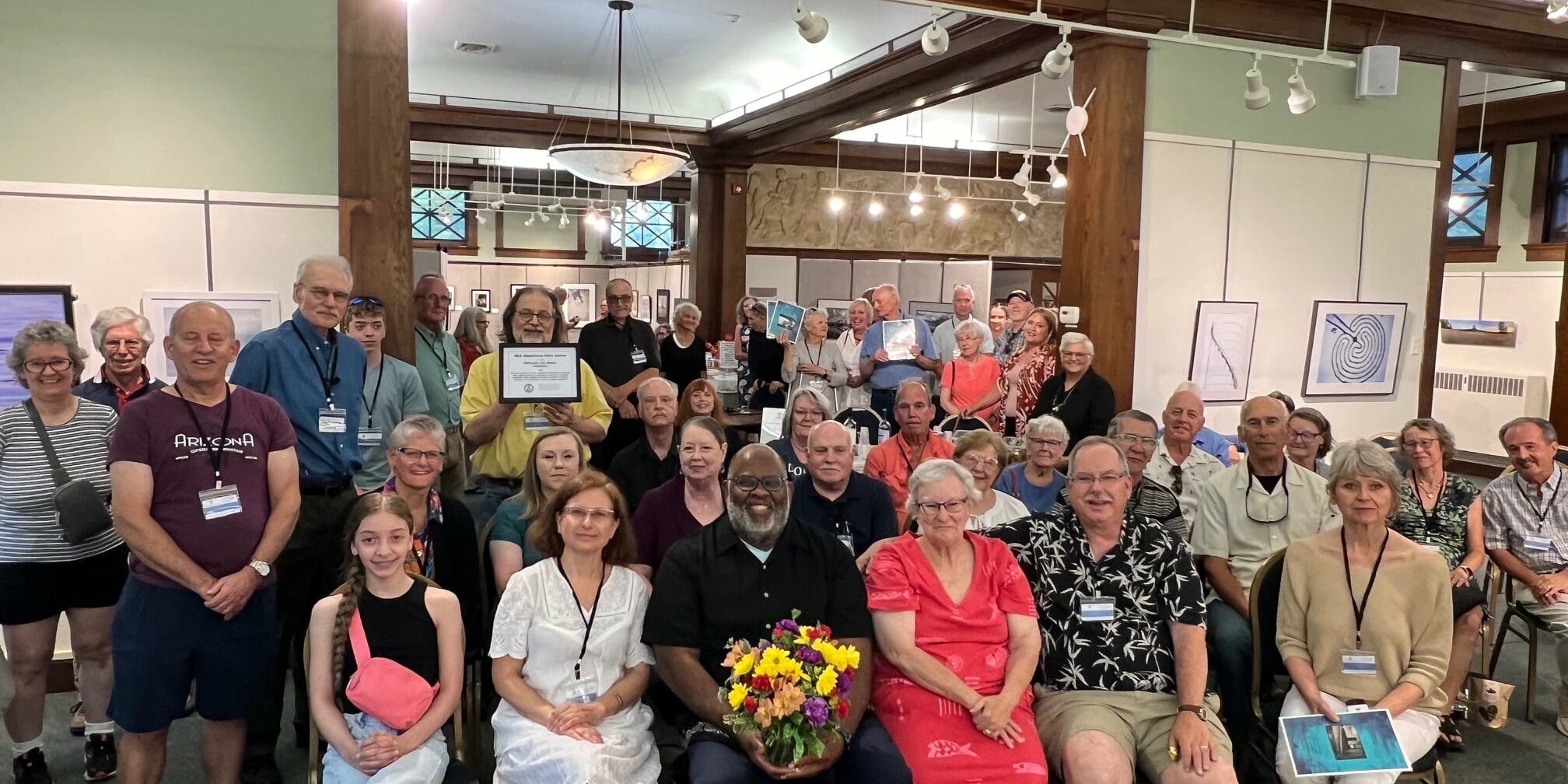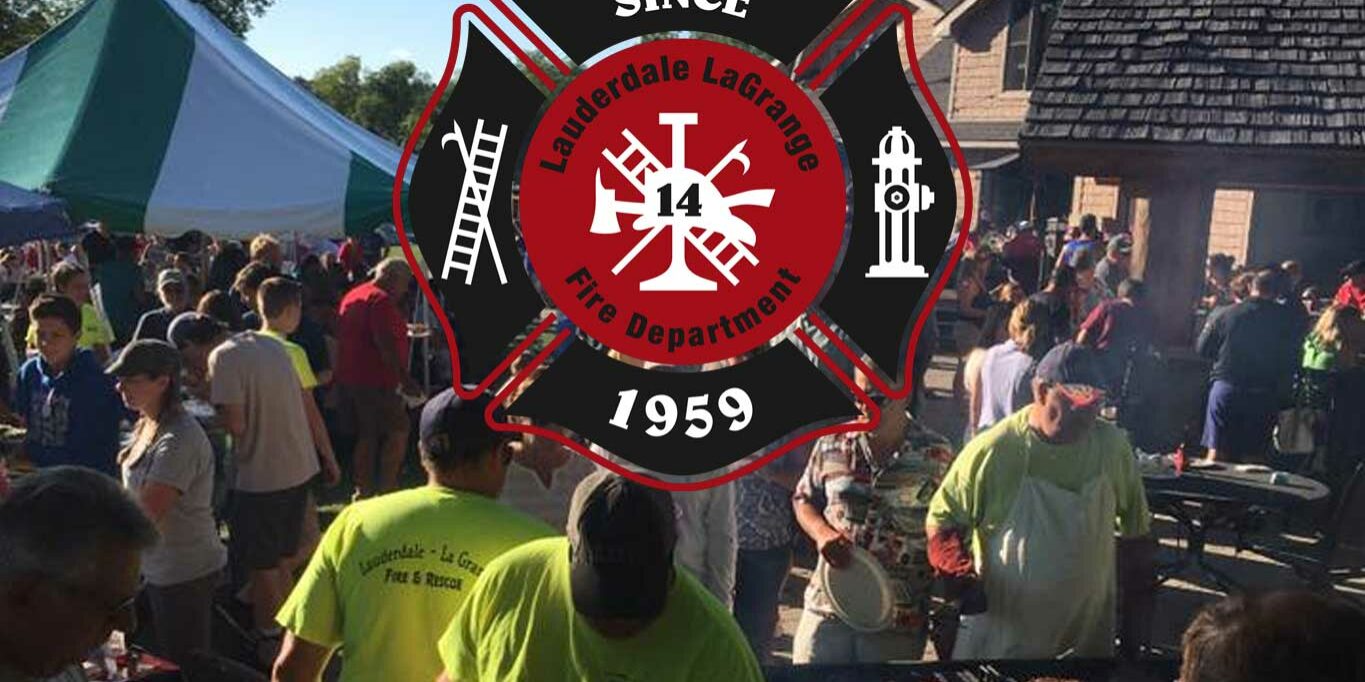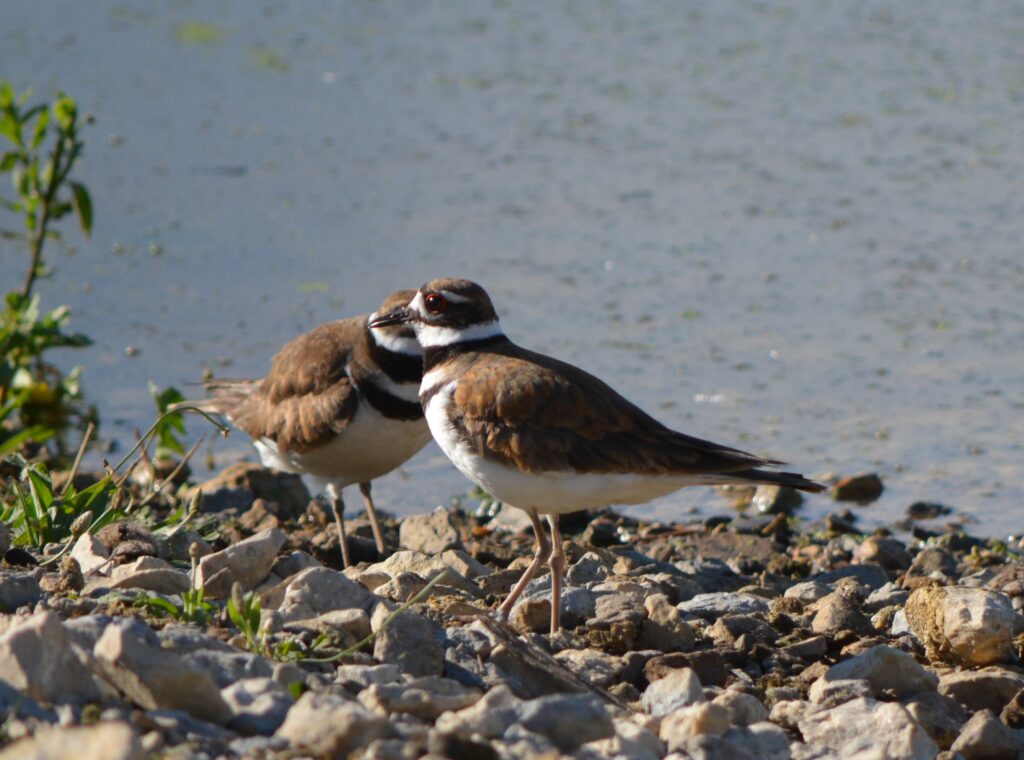
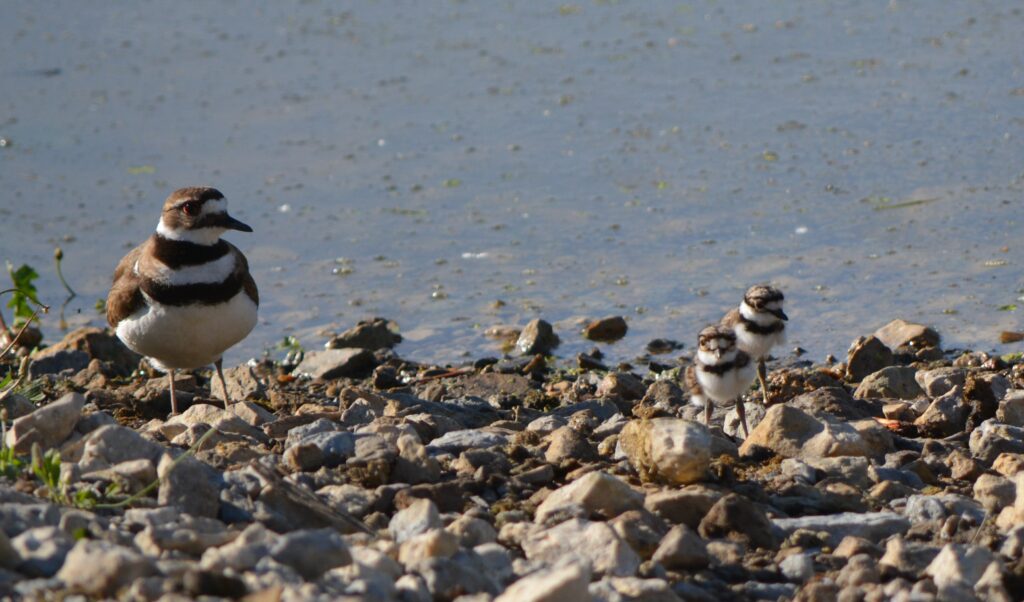
Steve Watson writes, “My morning meandering by Trippe and Cravath, I came upon a Killdeer family. Mom, Dad and two precocious chicks.”
Our thanks to Steve Watson for another beautiful contribution to the Banner.
[From The Cornell Lab]
A shorebird you can see without going to the beach, Killdeer are graceful plovers common to lawns, golf courses, athletic fields, and parking lots. These tawny birds run across the ground in spurts, stopping with a jolt every so often to check their progress, or to see if they’ve startled up any insect prey. Their voice, a far-carrying, excited kill-deer, is a common sound even after dark, often given in flight as the bird circles overhead on slender wings.
- Killdeer get their name from the shrill, wailing kill-deer call they give so often. Eighteenth-century naturalists also noticed how noisy Killdeer are, giving them names such as the Chattering Plover and the Noisy Plover.
- Gravel rooftops attract Killdeer for nesting, but can be dangerous places to raise a brood. Chicks may be unable to leave a roof because of high parapets and screened drain openings. Adults eventually lure chicks off the roof, which can be dangerous – although one set of chicks survived a leap from a seven-story building.
- Killdeer are surprisingly unobtrusive even on green lawns, despite their warm tawny coloration. Look carefully over lawns, short-mown fields, and even parking lots, and listen for the far-carrying kill-deer. (When you hear this call, the bird may be in flight. Look for it circling you, flying stiffly on long, pointed wings. It may resemble an American Kestrel, at least until it lands on the ground and begins walking.) Though they’re often found on dry land, you should also look for them on the edges of freshwater ponds and muddy lagoons.







